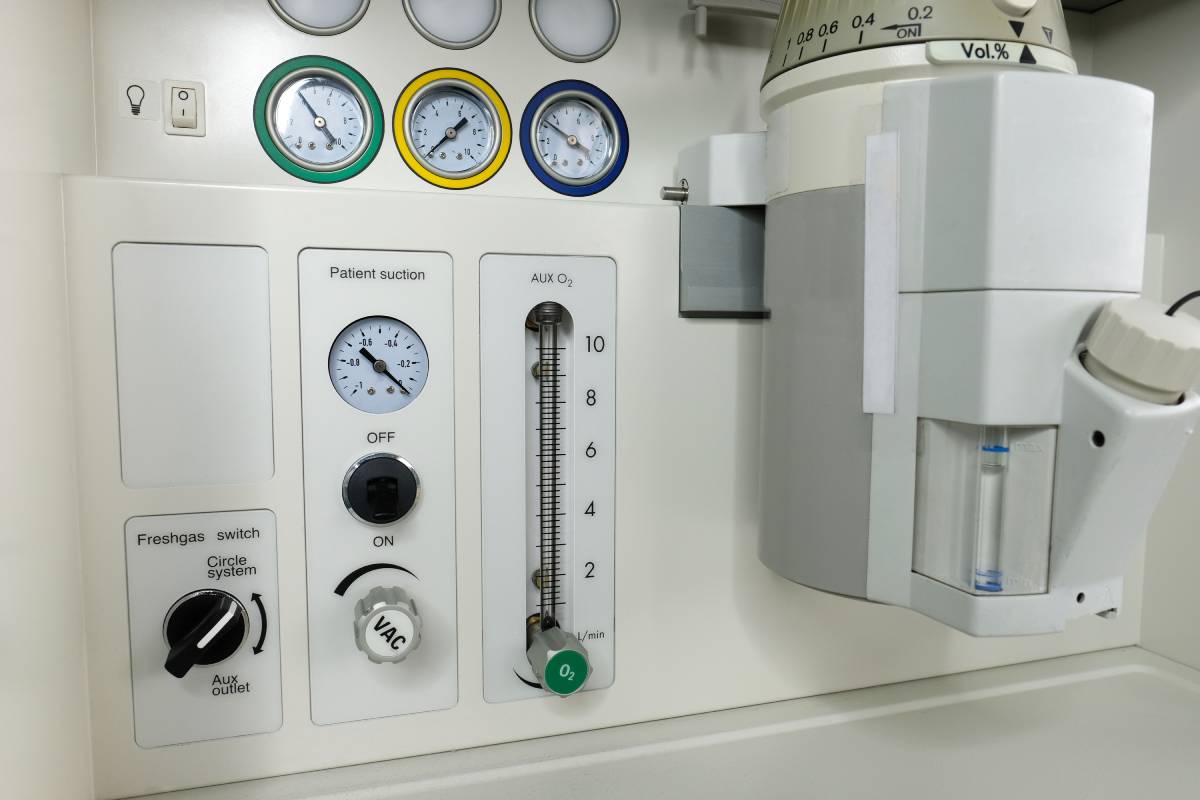Quality Improvement for Low-Flow Anesthesia

Inhaled anesthetics are often considered the gold standard of anesthesia: they are relatively easy to administer, have fewer harmful side effects than some of the non-volatile options, and tend to promote improved postoperative outcomes, particularly when it comes to cardiovascular patients.1 However, these forms of anesthesia are often far costlier than their non-gaseous counterparts. Moreover, in recent years, some less obvious disadvantages to using inhaled anesthetics have become more apparent, the foremost being that many of these gases contribute to global warming. In April of 2020, the United States Environmental Protection Agency (EPA) published a list of greenhouse gases, which included the common volatile anesthetics desflurane, sevoflurane, isoflurane, and nitrous oxide.2 Given these drawbacks, there has been a recent push to improve efficiency and mitigate environmental impact in the administration of inhaled anesthetics through low-flow anesthesia.
To this end, Todd Glenski, M.D. and Laura Levine, M.D. co-authored a paper reporting a program which successfully reduced sevoflurane use in the pediatric anesthesiology department of Children’s Mercy Hospital in Kansas City, a department which delivers over 25,000 anesthetics to patients per year.3 The authors took advantage of improving anesthesia delivery technologies which allow for low-flow delivery of volatile anesthetics (<1 liter of fresh gas flow), thus decreasing overall drug delivery. They also implemented a quality improvement project using a four-pronged approach: (1) gathering comparative data on the amount of sevoflurane used throughout the department, (2) instigating departmental education programs on efficacious gas use, (3) managing a huddle board on which updates on improvements were consistently reported, and (4) performing intraoperative confirmation rounds. Data was collected on the total bottles of sevoflurane used and the total number of anesthetics used each month for a twelve-month period.
Glenski and Levine reported that as a result of their measures, the number of anesthetics performed per bottle of sevoflurane used increased by approximately 25 percent. Moreover, the total number of bottles of sevoflurane used was reduced by 20 percent. After calculating the net environmental impact of this reduction, the authors found that the negated carbon footprint was equal to approximately 70,000 miles driven, over 3,200 gallons of gas consumed, or over 31,000 pounds of coal burned – a substantial impact.3
Given these findings, the notion that intentionally changing hospital norms will reduce overall volatile anesthetic use is well-supported. Not only can it be anticipated that this type of positive change is also possible in other surgical facilities that require regular administration of anesthetics, but also that it is feasible to replicate this study in practices around the United States by implementing educational programs and creating performance incentives. Therefore, this type of approach represents a novel, prime opportunity for reducing the carbon footprint of surgery while also reducing expenditure.
References
- Landoni G, Greco T, Biondi-Zoccai G, et al (2013). Anaesthetic drugs and survival: a Bayesian network meta-analysis of randomized trials in cardiac surgery. Br J Anaesth. https://doi.org/10.1093/bja/aet231
- Inventory of U.S. Greenhouse Gas Emissions and Sinks: 1990-2018. (2021, February 04). Retrieved from https://www.epa.gov/ghgemissions/inventory-us-greenhouse-gas-emissions-and-sinks-1990-2018
- Glenski, T. A., & Levine, L. (2020). The implementation of low-flow anesthesia at a tertiary pediatric center: A quality improvement initiative. Paediatric anaesthesia, 30(10), 1139–1145. https://doi.org/10.1111/pan.13994
